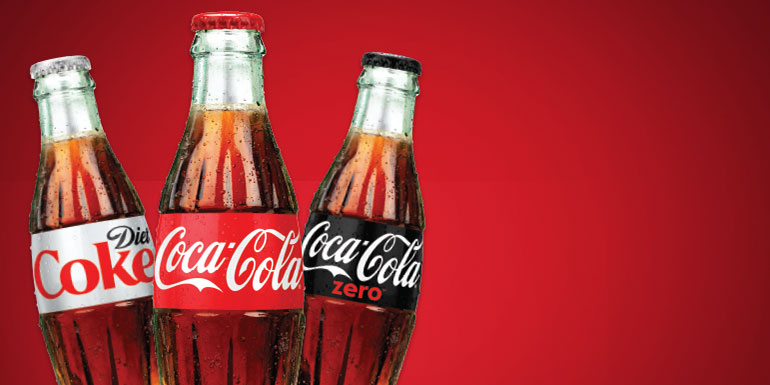
Rebirth for "The Real Thing"
The best way to enjoy a Coke®? In the original glass bottle.

Few would argue Coke is one of the most notable beverage brands in America — maybe even the world. More than taste, much of the brand’s success is wrapped-up in its packaging, which is something Coca-Cola has come to realize since introducing the contour bottle in 1915.
“We have 100 years of data showing that the contour bottle, the authentic real Coca-Cola bottle, is the ideal way for a consumer to enjoy a Coke,” says Evan Holod, brand director for Coke. “It has been a cornerstone of our business. When we make it a focal point of our marketing, it drives tremendous results on its own.”
Ted Ryan, director of Heritage Communications, says the ribbed glass bottle sets the brand apart from the competition. “It is unique and different, and it brings back special moments and memories for consumers,” he says. Ryan has managed the historical collections of The Coca-Cola Company since 1997, including a collection of physical and digital artifacts that showcase The Company’s history.
In honor of the Coke bottle’s century-old status, Coca-Cola has launched a Coke revival with a multi-faceted marketing approach. Key elements include the global Coke Bottle Art Tour featuring Coke bottle-inspired artwork, limited edition merchandise and in the convenience-retail channel, promotion of smaller-sized bottles to capitalize on consumers’ desire for portion control and more options.
“If you look at our television advertising, digital advertising, out of home, and social media platforms, any touchpoint where Coca-Cola is providing a message puts the smaller-size contour bottle at the center,” Holod says. “We are making this a focal point of conversation with consumers across all marketing initiatives.”
The opportunity for profits is clear—consumers want choices in terms of packaging and portion sizes, and Coke is providing retailers with the resources to meet those needs.
C-stores and Coke — A Real Fit
This new focus on smaller packages will undoubtedly benefit c-store retailers who face space limitations and who want to attract Coke consumers of all types: new and old as well as light to medium drinkers.
Holod says retailers are jumping on board with the new Coke campaign because of the potential for incremental sales. The company found that lapsed drinkers or light to medium drinkers, which tend to be incremental purchases, respond well to the smaller packages. This is a strong incentive for a retailer to give Coke products more space or to prioritize one package size over another.
“Retailers need to know that consumers want choices,” Holod says. “While our two-liter bottle, 12-oz. can and 20-oz. packages are terrific options, the opportunity to bring in different drinkers with different packages is what’s going to drive our business forward.”
He says retailers must provide the opportunity for consumers to find these items vs. hiding them on the shelf.
“The great thing about our glass packaging is it stands out anywhere you put it,” Holod says. “Just merchandising it and putting it where consumers can find it drives that incremental purchase. From a large-store standpoint, we see more focus on a six-pack of 8-oz. bottles; in other channels or coolers, we tend to sell the single-serve aluminum bottles.”
“It’s not just the 100th anniversary of contour; there is an opportunity to partner with and tell stories around the magical Coca-Cola experience across all of our touch points with consumers, especially in retail,” Holod says. “It's not time-bound or limited. This marketing shift is not over when we reach 101 years. It is the focal point for us going forward.”
Holod adds that Coke was only available in a 6.5-oz. contour bottle up until the 1950s. “So here we are, 60 years or so later, coming back to what we’ve always known. The iconic glass is the perfect sensorial experience, and the perfect size to always leave a drinker wishing for just one more sip.” He also says food and drink consumption based on diet patterns is not a trend anymore — it’s reality. “Our products are part of people's lives like never before because we are bringing these options to them.”
Holod wants retailers to know the sparkling category will continue to grow. “Despite the ups and downs, in the long run this is the greatest product, beverage and package consumers have ever seen or tasted. Now that's a long-term growth story.”